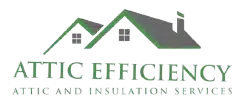Importance of ensuring home energy efficiency
Ensuring your home is energy efficient not only helps lower your energy bills but also reduces your environmental impact. With proper attic insulation, you can prevent heat from escaping in the winter and keep your home cooler in the summer. This can lead to significant cost savings on heating and cooling expenses throughout the year. Additionally, improving your home’s energy efficiency can increase comfort levels and overall sustainability.
![]()
Understanding attic insulation rebates
You can save money by using attic insulation rebates. These rebates encourage homeowners to improve energy efficiency. Rebates can cover a portion of your insulation costs, making it more affordable. Check with your local utility company or government agencies for available programs. Upgrading attic insulation can reduce energy bills, improve home comfort, and benefit the environment.
Types of attic insulation materials
Fiberglass, celluose, and foam are some common types of attic insulation materials. Fiberglass is a traditional option, while cellulose is made from recycled paper products. Foam insulation can provide a higher R-value, which measures the material’s insulating effectiveness. Each material has its strengths and can be suitable for different insulation needs in your attic.
Benefits of proper attic insulation
Proper attic insulation helps lower your energy bills by keeping your home warmer in winter and cooler in summer. It also reduces your carbon footprint by conserving energy. By maximizing your home’s energy efficiency, you not only save money but also contribute to a more sustainable environment.
How attic insulation impacts energy efficiency
Attic insulation plays a significant role in your home’s energy efficiency. It helps in maintaining a comfortable temperature in your house by preventing heat from escaping during cold weather and keeping cool air inside during hot days. This insulation can also reduce your energy bills by making your heating and cooling systems work more efficiently. Proper insulation in the attic acts as a barrier that regulates the temperature, making your home more energy-efficient.
Eligibility criteria for attic insulation rebates
To be eligible for attic insulation rebates, you typically need to own a home or be a renter with permission from the homeowner to make upgrades. The property should have an attic that is currently under-insulated, meaning it does not meet the recommended insulation levels for energy efficiency. Rebates are often offered for upgrading insulation to meet or exceed these levels. It’s important to check with your local energy efficiency program or utility company to see if you qualify and to get specific details on the process for claiming rebates.
Application process for attic insulation rebates
To apply for attic insulation rebates, you will first need to check if you are eligible for any rebates from your local government or utility company. Once you determine your eligibility, follow these steps to complete the application process:
-
Gather all necessary documents such as proof of purchase, contractor invoices, and energy efficiency ratings.
-
Fill out the rebate application form accurately and completely.
-
Submit the application form along with the required documents either online or by mail as instructed.
-
Wait for the processing period, which can vary depending on the rebate program.
-
If approved, you will receive your rebate either through a check or a credit on your utility bill.
Maximizing savings through attic insulation rebates
Attic insulation rebates can help you save money while making your home more energy-efficient. By taking advantage of these rebates, you can lower your energy bills and reduce your carbon footprint. Here are a few key points to consider when maximizing savings through attic insulation rebates:
-
Rebates: Attic insulation rebates are incentives offered by government agencies or utility companies to encourage homeowners to improve their home’s energy efficiency.
-
Savings: By properly insulating your attic, you can save money on heating and cooling costs throughout the year.
-
Energy Efficiency: Insulating your attic helps regulate your home’s temperature, reducing the strain on your heating and cooling systems.
-
Process: To maximize your savings with attic insulation rebates, you may need to meet certain requirements or follow specific procedures outlined by the rebate program.
Professional installation vs. DIY insulation
Professional installation of attic insulation is often recommended over a DIY approach. Professionals have the expertise and tools to ensure proper insulation, leading to better energy efficiency in your home. If done incorrectly, DIY insulation may result in gaps or compressed insulation, reducing its effectiveness. Professional installation may initially cost more, but it can provide long-term energy savings and ensure optimal insulation performance.
Tips for maintaining energy efficiency after insulation
After insulating your attic, you can further maximize your home’s energy efficiency by ensuring proper maintenance. Here are some simple tips to help you maintain the energy efficiency of your home post-insulation:
-
Regularly check for any signs of damage or wear on the insulation material.
-
Seal any air leaks around windows, doors, and electrical outlets to prevent energy loss.
-
Keep your attic well-ventilated to prevent moisture buildup, which can reduce the insulation’s effectiveness.
-
Monitor your energy consumption regularly to identify any unusual spikes that may indicate an issue with your insulation.
-
Consider adding additional insulation if you notice a significant increase in your energy bills despite having insulated your attic.
By following these tips, you can ensure that your home remains energy-efficient and comfortable for years to come.

